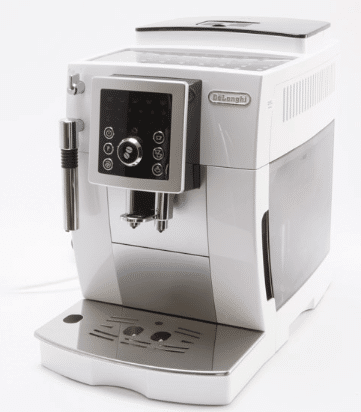How to Replace and Maintain DeLonghi Seals and Gaskets: A Step-by-Step Guide
Proper maintenance of your DeLonghi coffee machine is crucial to ensure its longevity and functionality, especially in settings like offices, restaurants, hotels, and homes where its usage is frequent and essential.
Seals and gaskets play a pivotal role in the performance of your coffee machine, forming an airtight barrier that prevents leaks and maintains pressure during brewing.
Over time, these components can degrade, leading to decreased machine efficiency and coffee quality. This guide provides a comprehensive walkthrough on how to replace and maintain the seals and gaskets on your DeLonghi appliances to keep them running smoothly.

Understanding the Importance of Seals and Gaskets in Your DeLonghi Machine
Seals and gaskets are found at various connection points within your DeLonghi coffee machine, including between the brewing unit and the machine body, around the water tank, and in the coffee dispensing area. Their primary function is to prevent air and water leaks, which are crucial for efficient machine operation and to ensure the best coffee flavor and temperature.
Identifying When Replacement Is Needed
Before delving into the replacement process, it’s important to recognize the signs that your seals and gaskets need attention:
- Water Leaks: If you notice water accumulating under or around your coffee machine, it’s a clear sign that the seals may be failing.
- Irregular Coffee Flow: Changes in coffee flow or a decrease in coffee quality can indicate that air is entering the system where it shouldn’t.
- Visible Wear and Tear: Inspect the seals for any cracks, brittleness, or deformations. Any of these can compromise the seal’s effectiveness.
Tools and Materials Needed
To replace and maintain the seals and gaskets in your DeLonghi coffee machine, you will need:
- Replacement seals and gaskets specific to your DeLonghi model
- A screwdriver set (usually Phillips and flat-head)
- A pair of needle-nose pliers
- A small brush or cloth for cleaning
- Food-safe lubricant (optional, for easier installation)
Step-by-Step Guide to Replacing Seals and Gaskets
Step 1: Unplug and Prepare the Coffee Machine Always start by unplugging your coffee machine to ensure safety. Remove any removable parts like the water tank, drip tray, and coffee grounds container.
Step 2: Access the Old Seals and Gaskets Locate the seals and gaskets that need replacement. This might require you to remove some panels or parts of the coffee machine. Use your screwdriver and pliers to carefully disassemble these components.
Step 3: Remove the Old Seals Carefully remove the old seals and gaskets. They might be stuck due to coffee residue or water deposits, so take your time to avoid damaging the machine.
Step 4: Clean the Seated Areas Use a small brush or cloth to clean the areas where the seals and gaskets sit. Removing old coffee oils and residues ensures a good seal with the new parts.
Step 5: Install New Seals and Gaskets Place the new seals and gaskets into position. If they are difficult to install, apply a small amount of food-safe lubricant to ease the process.
Step 6: Reassemble the Coffee Machine Once the new seals are in place, reassemble the coffee machine by replacing any panels or parts you removed. Ensure everything is tight and properly aligned.
Step 7: Test the Coffee Machine Plug in the machine and perform a brewing cycle without coffee to check for leaks. If you notice any issues, double-check your installation.
Maintenance Tips for Longer Lasting Seals and Gaskets
- Regular Cleaning: Keep the machine and especially the sealed areas clean from coffee oils and residues.
- Inspect Regularly: Check the condition of the seals and gaskets periodically, especially if you notice changes in the machine’s performance.
- Avoid Over-tightening: When reassembling, make sure not to over-tighten screws as this could pinch or damage the new seals.
By following these steps, you can effectively maintain and replace the seals and gaskets of your DeLonghi coffee machine, ensuring optimal performance and longevity of your appliance. Whether in a busy café or a cozy kitchen, proper upkeep of these components is key to enjoying perfect coffee every








